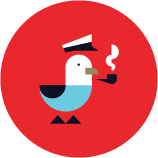As we're wrapping up our year here at Dockwa HQ, we're taking a look back to see what boaters liked best. From boating terminology and...
How to Dock a Boat: Boat Handling Tips from a Former Dock Hand
Post by Tripp Messinger - Published on 08/10/21 16:00 PM
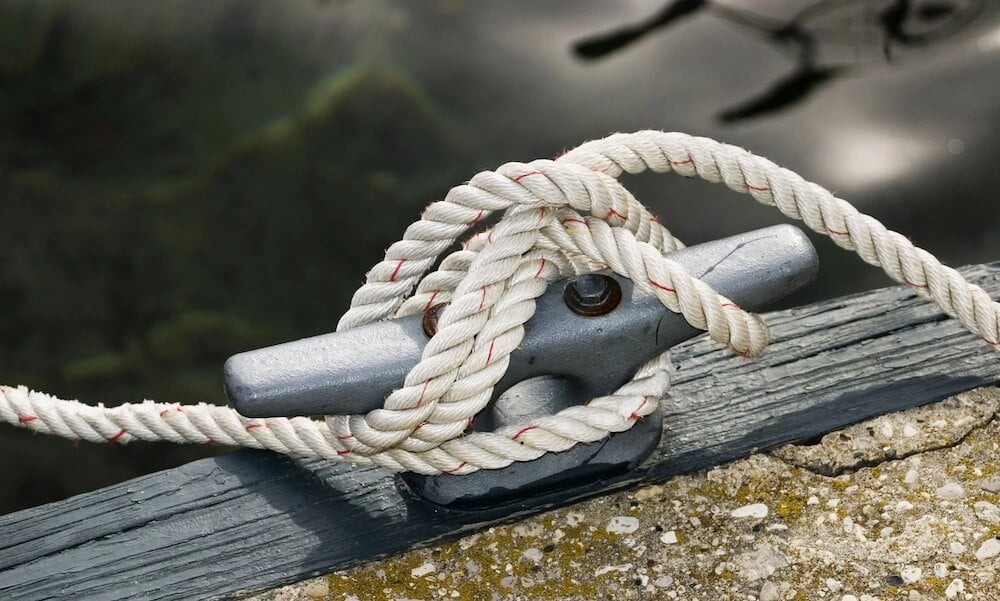
Being on the water is one of the best feelings out there… 99% of the time. But, unfortunately, that lone 1%–stress–more often than not occurs during that brief moment you pull up to the slips to dock, knowing that the most superficial scratch on your (or your neighbor's) boat can ruin your weekend. It compounds the stress factor even more.
Between the wind, current, and tight squeezes, we all know that docking for many is enough to boil your blood. If you spend enough time on the docks, you’ll see more than a few marriages tested in these tense situations.
It’s easy to say “practice makes perfect,” but it’s also tricky to practice docking your vessel without facing any consequences. The following tips will make your next docking experience a bit easier.
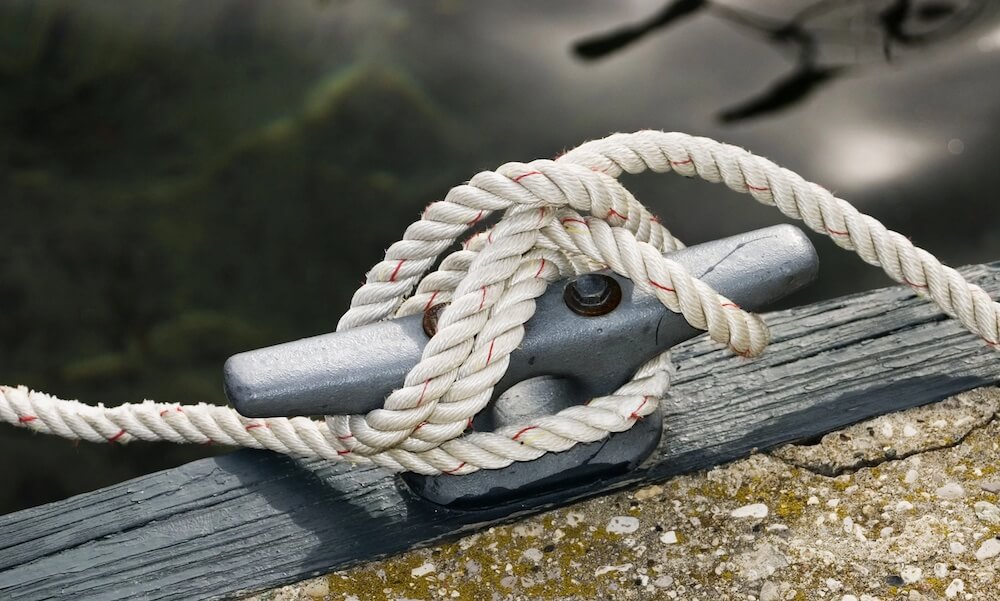
1. Relax
The last thing you or your crew should ever do is panic. Panicking doesn’t help anyone, so don’t scream at your crew, your captain, or the dockhands. Communication is vital, but by yelling at someone, all you’re doing is making the moment more stressful and increasing your chances of causing an accident.
2. Bring your throttle down
Be gentle with your throttle: you know what it takes to get your vessel to certain speeds, and you should never have the boat even close to half-throttled or above 20 (x1000) RPM when docking. Taking it easy on the throttle will reduce the risk of damaging your vessel and others, but it will also keep any damage minimal if you make contact.
3. Prep your fenders and lines
Always have fenders and lines rigged before getting to the dock, and be aware of where the fenders should be hanging. More often than not, they should be hovering right above the waterline (not touching the water). At the very least, you’ll want two or three fenders, a bow line, a stern line, and at least one spring line.
4. Toss the right line
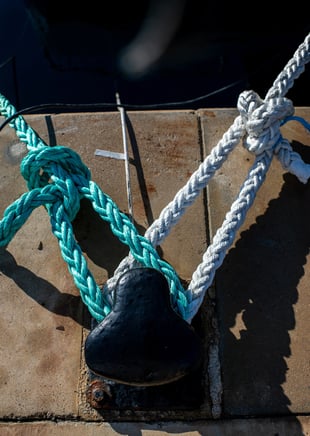 Unless you consider yourself the top 1% of captains, don’t have your deckhands provide a bow line first. You can rarely do anything with a bowline, and if you’re facing any wind or current, dockhands can’t control the boat with a bowline. Provide a spring line that you can either back down or hedge forward on.
Unless you consider yourself the top 1% of captains, don’t have your deckhands provide a bow line first. You can rarely do anything with a bowline, and if you’re facing any wind or current, dockhands can’t control the boat with a bowline. Provide a spring line that you can either back down or hedge forward on.
What is a bowline?
A bowline is tied to your boat's front (or bow). It can be used in the case of a tow or as a support for docking your boat, but too often, boaters mistakingly lead with the bow when they should be tossing a spring line in docking.
What is a spring line?
A spring line helps prevent your boat's forward or backward movement and reduces banging against the dock. In addition, if wind or current pushes you off the pier, you can use this spring line to get closer to it
5. Use your spring
Many dockhands know what they can do with a spring line, but if not, you should see if you need to instruct them. Once you toss or hand off a spring line, a dockhand should wrap on a cleat that is either forward or further back on the dock to minimize movement and bring you closer. They should not lock off the line but wrap it so that you can quickly move it to have the most control possible.
6. Backing down
If you’re backing down: Provide a forward spring line that you can back down on. Turn the wheel hard to port and back down once the spring line has been locked off or secured to the dock. In the case of a boat with twin screws, use the starboard engine only to back down and cut the wheel hard to port; you’ll begin to see your vessel inch closely into the dock.
7. Follow with the bow line
Once you’ve gotten close enough, have your deckhand provide a bowline to someone on the dock, preferably a dockhand.
Please make sure the person on the dock locks down the bowline to the pier but doesn’t use all their force to bring it in as tightly as possible. This will only kick your stern out and create more problems.For example, if you’re tying up on the starboard side, bow in with a strong wind forcing you off the dock, and provide an aft spring line to someone on the pier. With a wrap-around cleat, you can move forward on the spring line and turn the wheel hard to starboard with the boat in forward. (In the case that your vessel has twin screws, use the port engine only and turn hard to starboard). Your boat will begin to hedge forward and move closer to the dock, even if slowly.
Have your deckhand provide a stern line to someone on the dock. This can be brought in tightly and exchanged for a cross stern once you’re secure. With these three lines securing you, you can now have the dockhands bring your bow in tightly and adjust any springs necessary.
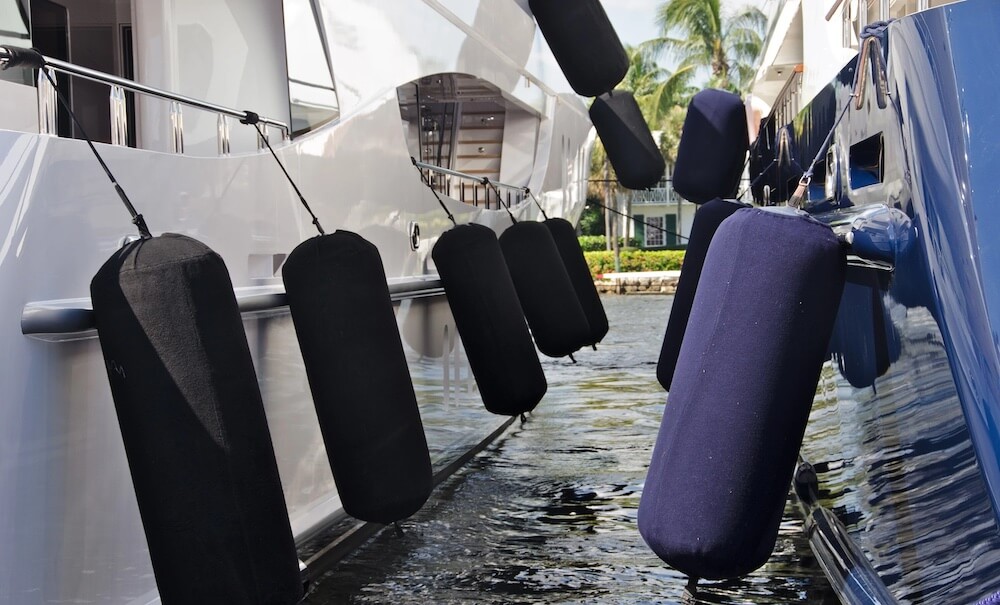
Bonus tips:
-
If the wind is strong, don’t be a show-off. It’s often easier to dock bow-in than back down (especially with a sailboat).
-
Strong currents may require a slight adjustment to this post's tips.
-
Fenders exist for a reason, so if you’re even remotely concerned, be sure to have your vessel rigged on both sides.
-
Large ball fenders save thousands of dollars in damage every year. It doesn't hurt to have one on board, especially if you have a few extra hands on deck that can have one in hand with their head on a swivel.
-
Many newer boats come with bow or stern thrusters. These can be helpful, but you’ll want to refrain from using a thruster for more than 2 seconds at a time or you will run the risk of burning it out.
Hopefully these tips will help you in future docking experiences and save you some awkward moments (and money) with your family, friends, and neighbors at the dock!
Note: This post has been updated from its original publish date to include new material.
